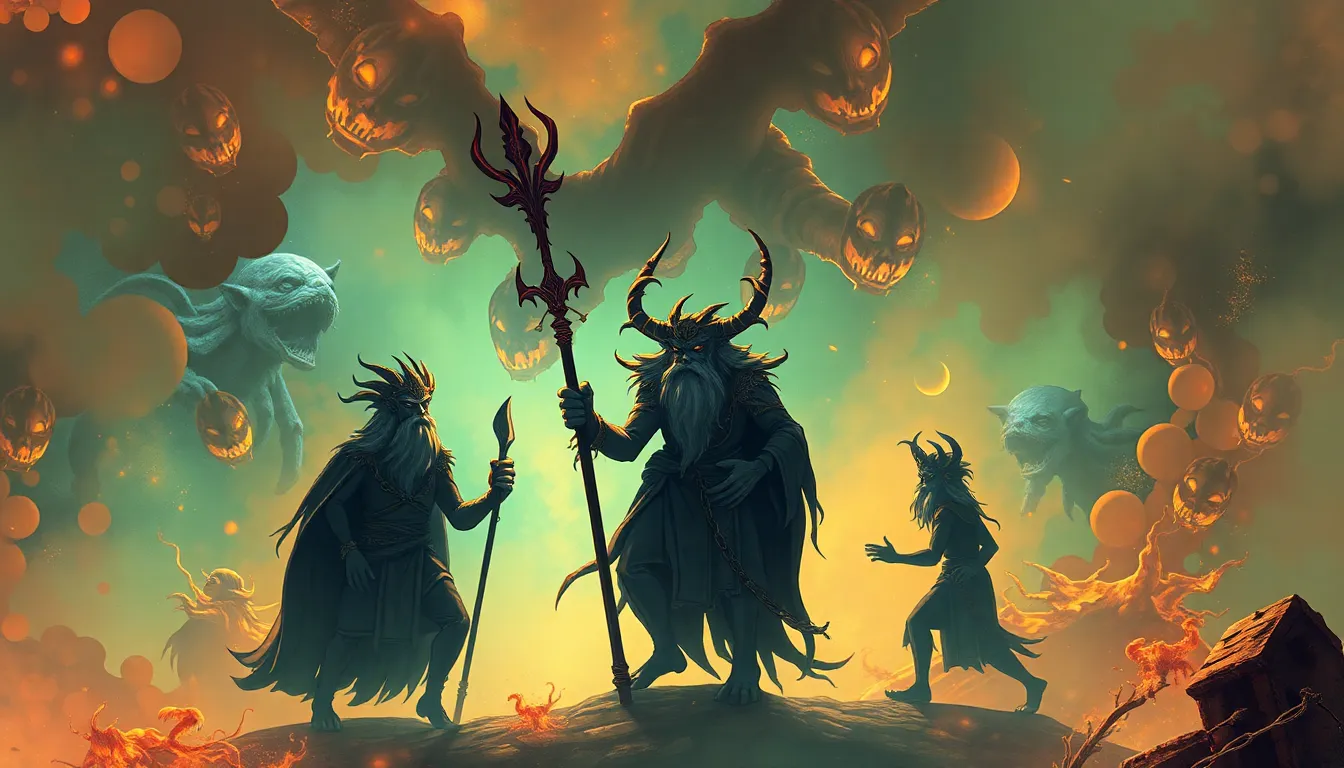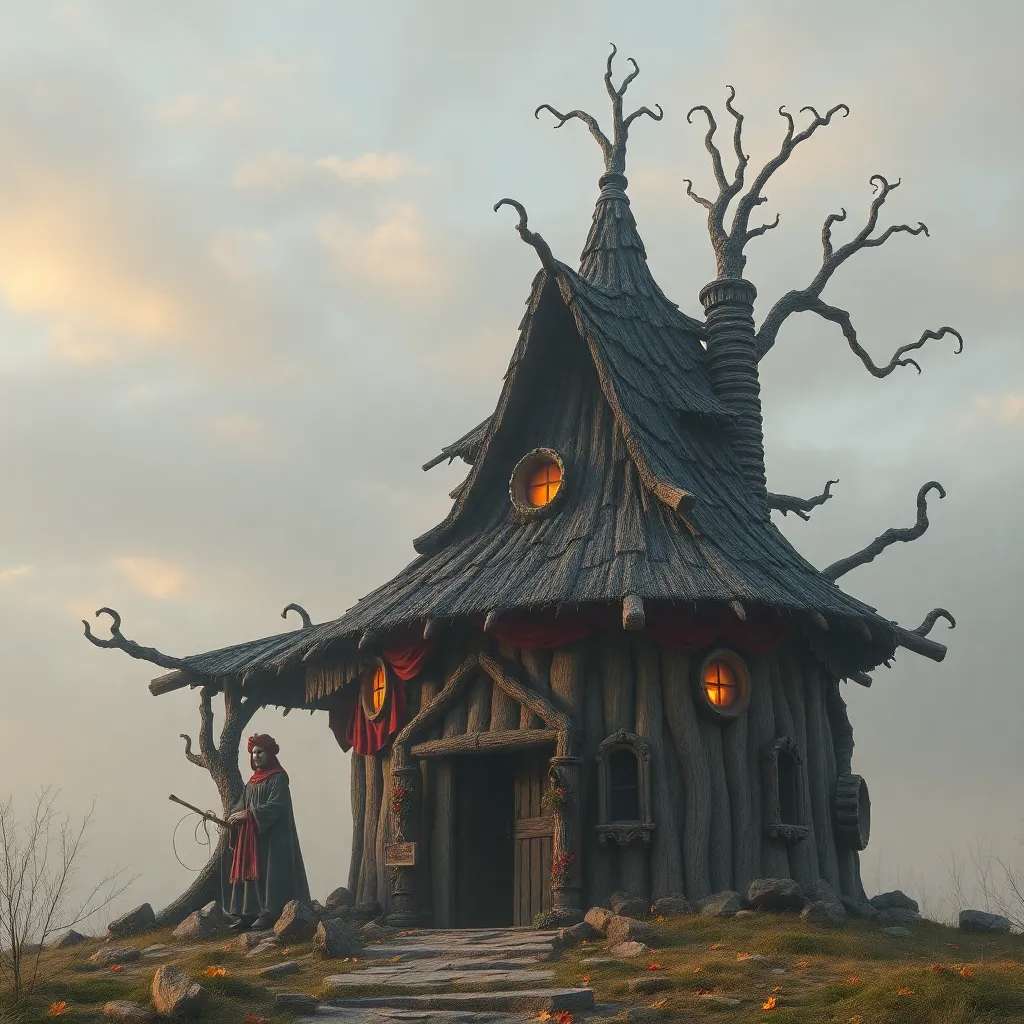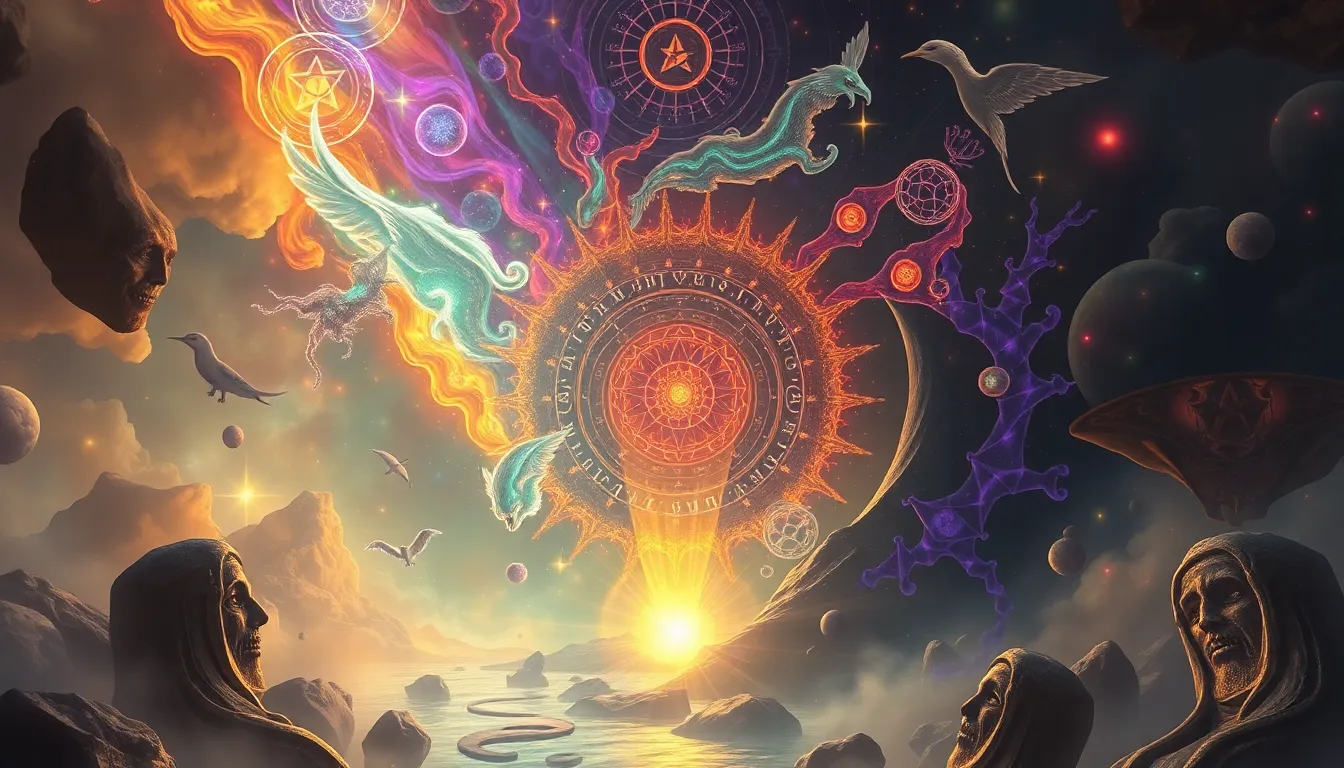The Trickster’s Dilemma: Morality in Mythology
I. Introduction
Tricksters have long occupied a prominent place in mythology, acting as complex figures that defy simple categorization. Defined as characters that embody cunning and mischief, tricksters often navigate the boundaries between right and wrong, challenging societal norms and moral expectations.
The trickster archetype is prevalent across various cultures and narratives, serving as a bridge between the ordinary and the extraordinary. These figures often highlight the fluidity of morality, showcasing how ethical considerations can shift depending on context and perspective.
Understanding the significance of morality in mythological narratives helps illuminate the broader cultural implications of trickster tales. These stories often reflect the values, fears, and aspirations of the societies from which they originate.
II. Historical Context of Trickster Figures
A. Tricksters Across Cultures: A Comparative Analysis
Trickster figures appear in numerous cultures, each embodying unique traits and serving diverse functions. While their behaviors may vary, the core characteristics often include deception, intelligence, and a knack for chaos. Some notable examples include:
- Loki from Norse mythology, known for his shape-shifting abilities and clever schemes.
- Anansi in African folklore, a spider who often tricks other animals to achieve his goals.
- Coyote in Native American traditions, a creator and destroyer who embodies both wisdom and folly.
B. Evolution of Trickster Characters in Oral Traditions
Tricksters have evolved over centuries within oral traditions, adapting to changing cultural contexts while maintaining their core traits. As societies evolved, so did the narratives surrounding these figures, allowing them to remain relevant and resonant.
C. Key Examples: Loki, Anansi, and Coyote
Loki, Anansi, and Coyote serve as exemplary tricksters, each presenting unique interpretations of the archetype:
- Loki: Often portrayed as a villain, Loki’s actions lead to both chaos and resolution in Norse myths.
- Anansi: Celebrated for his cleverness, Anansi’s tales often impart moral lessons through his cunning.
- Coyote: A dual character who embodies both the trickster and the wise teacher, reflecting the complexities of human nature.
III. Characteristics of the Trickster Archetype
A. Common Traits and Behaviors
Tricksters share several defining characteristics, including:
- Deception: Tricksters often use cunning and deceit to achieve their goals.
- Adaptability: They can navigate various social contexts, often changing their identities.
- Cleverness: Tricksters are typically intelligent, using their wits to outsmart others.
B. The Duality of Trickster Roles: Hero vs. Villain
The role of the trickster is marked by its inherent duality. Tricksters can be seen as both heroes and villains, depending on the perspective of the narrative. This ambivalence allows them to challenge traditional moral frameworks and question the nature of good and evil.
C. The Role of Humor and Wit in Trickster Tales
Humor and wit are central to trickster tales, often serving as tools for social critique. Through laughter, tricksters expose the absurdities of life and the flaws within societal norms, inviting audiences to reconsider their values.
IV. Morality and Ethics in Trickster Narratives
A. Exploring Moral Ambiguity and Relativism
Moral ambiguity is a hallmark of trickster narratives. Tricksters often operate in a gray area, where actions that may seem unethical can lead to beneficial outcomes. This complexity invites audiences to reflect on their own moral beliefs.
B. The Trickster’s Role in Challenging Societal Norms
Tricksters serve as catalysts for change, challenging established norms and provoking thought. Their antics often highlight the inconsistencies and contradictions within societal values, encouraging a reevaluation of what is considered right or wrong.
C. Moral Lessons Embedded in Trickster Tales
Despite their mischief, trickster tales frequently contain embedded moral lessons. These lessons can teach values such as:
- Resourcefulness in the face of adversity.
- The importance of questioning authority.
- The need for empathy and understanding in complex situations.
V. Tricksters as Agents of Change
A. The Trickster’s Function in Mythological Frameworks
Tricksters function as agents of change within mythological frameworks. They disrupt the status quo, creating opportunities for growth and transformation. Their actions often lead to unexpected consequences, reshaping the world around them.
B. How Tricksters Facilitate Growth and Transformation
Through their antics, tricksters facilitate personal and communal growth. Their ability to navigate chaos often leads to new insights and solutions, highlighting the transformative power of adaptability and resilience.
C. The Impact of Trickster Actions on Communities and Individuals
The actions of tricksters can have profound impacts on their communities. By challenging norms and creating upheaval, they often inspire change and encourage individuals to think critically about their circumstances.
VI. Case Studies: Tricksters in Different Cultures
A. The Role of Hermes in Greek Mythology
Hermes, known as the messenger of the gods, embodies the trickster archetype through his cleverness and quick wit. His actions often blur the lines between right and wrong, highlighting the complexities of human nature.
B. The Significance of Raven in Indigenous North American Lore
Raven serves as a vital figure in many Indigenous cultures, often depicted as a creator and trickster. His stories reflect themes of transformation and the interplay between darkness and light, emphasizing the dual nature of existence.
C. The Influence of Br’er Rabbit in African American Folklore
Br’er Rabbit is celebrated for his cunning and resourcefulness in the face of adversity. His tales often convey important cultural values and lessons about resilience, cleverness, and the struggle against oppression.
VII. Modern Interpretations of Trickster Figures
A. Tricksters in Contemporary Literature and Film
Modern literature and film continue to explore the trickster archetype, often reinterpreting traditional tales to reflect contemporary issues. These adaptations highlight the timelessness of the trickster’s moral dilemmas.
B. The Trickster in Pop Culture: Examples and Analysis
Tricksters have found a place in pop culture, appearing in various forms such as:
- Movies like “The Joker” in the Batman franchise, representing chaos and moral ambiguity.
- TV shows like “Rick and Morty,” where the titular characters navigate complex moral landscapes.
- Books like “American Gods” by Neil Gaiman, which reimagines mythological figures in modern settings.
C. The Relevance of Trickster Morality in Today’s Society
The moral dilemmas faced by tricksters resonate with contemporary audiences, prompting discussions about ethics, authority, and societal norms. Their stories encourage critical thinking and reflection on personal values in an increasingly complex world.
VIII. Psychological Perspectives on Tricksters
A. Jungian Interpretation of the Trickster Archetype
From a Jungian perspective, the trickster represents the shadow aspect of the psyche, embodying the chaos and unpredictability inherent in human nature. This archetype invites individuals to confront their darker impulses and embrace the complexity of their identities.
B. The Trickster as a Symbol of the Unconscious Mind
The trickster can also be seen as a symbol of the unconscious mind, representing the hidden desires and motives that influence our behaviors. Their actions urge individuals to explore their inner worlds and recognize the multifaceted nature of morality.
C. Coping Mechanisms: How Tricksters Help Us Navigate Morality
Tricksters provide valuable coping mechanisms, illustrating how humor and cleverness can be employed to navigate moral dilemmas. Their stories remind us of the importance of adaptability and resilience in the face of challenges.
IX. Critiques and Controversies Surrounding Trickster Morality
A. Ethical Implications of Trickster Actions
The actions of tricksters often raise ethical questions, prompting debates about the morality of deception and manipulation. Critics argue that these narratives can glorify unethical behavior, while others view them as



